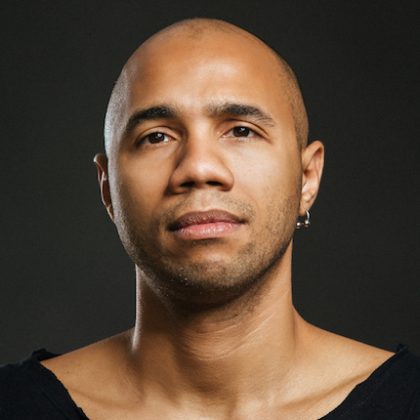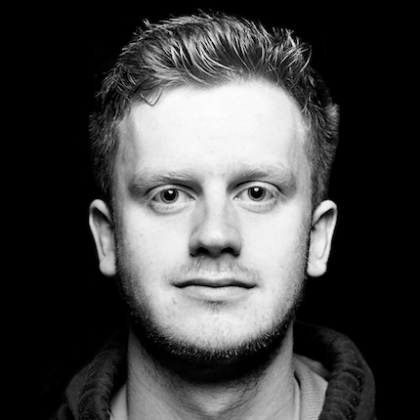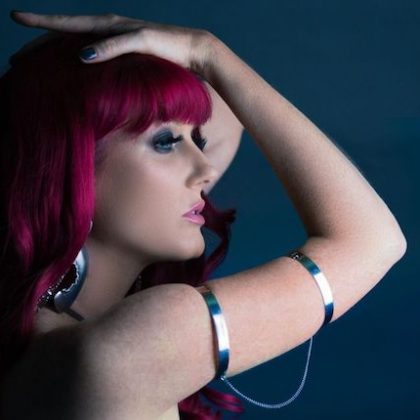Metronome #071: James Dymond
Insomniac’s Metronome series features mixes from some of today’s fastest-rising electronic stars, as well as championed legends. It takes listeners deep across a wide range of genres, movements, cultures, producers, artists and sounds that make up the diverse world of electronic music.
James Dymond burst onto the scene in 2011 with a series of releases that received heavy support from Armada heavyweights Armin van Buuren and Dash Berlin. With an ear that firmly grasps what trance fans of today want and with an extensive knowledge of the genre’s roots, the budding producer has quickly risen to the forefront. His years as a concert pianist and his deep understanding of orchestral music have helped form a foundation for his music that led Armin himself to state, “If you were to look up ‘uplifting’ in a dictionary, I’m sure you’ll find James Dymond in there somewhere.”
Dymond’s sets have a perfect balance between forward-thinking and nostalgic. Full of uplifting melodies, heavy-hitting beats, and exclusive remixes of the classics, Dymond’s Metronome mix is bound to appeal to dance music lovers of every era.

You’ve got a firm grasp of trance music’s roots, and your remixes hold up right next to their originals. How important is it for new fans to know about the classics?
I think it’s very important. Fans should have at least some understanding of where the music came from—the earlier scene and the style that was played. With the new style/crossover of trance/EDM becoming popular now, I imagine that a lot of the younger generation exposed to this style of trance won’t necessarily understand how trance sounded from the beginning. I may be looking at it from a slightly arrogant or “purist” type of view, but with any music genre, I think knowing its background will help you enjoy and appreciate it more.
Trance never seems to have left the UK. However, it’s experiencing a resurgence in the States. What do you think is driving this revival?
Pretty much what I just mentioned: the crossover between the trance sounds and EDM sounds. With the likes of Armin van Buuren playing mainstage sets at the big festivals in the US, he’s able to help increase the awareness of trance across the country. It only takes a couple of trance tracks in his sets for a few people to become more interested, and then it’s only a matter of time before they dig deeper into trance for themselves. Then there are plenty of smaller scenes throughout the US with dedicated followers, and it seems that slowly these scenes are increasing as the genre grows.
You’re good at spreading your knowledge of production around. You have lots of tutorials and online resources. Did you have mentors when you were learning to produce?
Yes, absolutely. I’ve never hidden the fact that I had a ton of help when I was first learning to produce, and I think it’s only fair I give back to the scene with my tutorials and advice. Friends who had been producing for years would give me pointers and feedback on my tracks, which really helped push me in the right direction. In 2011, I started working for a local techno record label in the town I was living in at the time. It was free work, but in return, the owner let me have access to his insanely good recording studio. He would also pop in from time to time to have a listen and let me know where I was going wrong on the more technical side of music production. This is what really made the big difference—knowing how music should sound in a proper studio, and having someone with 20 years of dance music production experience at your side.
You got picked up by Armada really early in your career. What’s it like as someone who used to frequent the clubs these guys performed in to now work alongside them?
Of course, it was pretty amazing! I couldn’t believe it at the time. I thought on the off chance, I’ll send my demo to Armada, who got back to me in a few days saying they loved the tracks and wanted to sign them! Only maybe a year later, I was opening the Who’s Afraid of 138 stage at A State of Trance 600 festivals. It was pretty surreal at first, to be able to hang out and talk with the guys I had looked up to for years in the scene. And as time went on, I’ve become great friends with some of these people!
Do you still sit down and play on a real piano nowadays? Or is it all virtual studio technologies (VST) and synths?
Not as much as I’d like. I have a keyboard in my studio, although it doesn’t get used too much. It’s only a MIDI keyboard, so I still have to connect and play through my PC, so technically I’m still playing a VST [laughs].
As a DJ, you’ve played house, electro, drum & bass and of course, trance. What sounds outside of your chosen genre are inspiring you these days?
Right now, a lot of more classic and early ‘90s and 2000s house and hard house. In a few of my recent productions, I’ve been messing around with vocals that you would recognize from these genres and then mixing them with modern trance. It creates a pretty cool vibe, almost a nostalgic feel. Psytrance is a genre that’s always inspiring me; all of the cool background FX and transition fills are continuously creeping into my productions.
- Track List:
Astrix & Ace Ventura “Valley of Stevie”
Pixel & Wrecked Machines “Mother Funker” (Outsiders Remix)
James Dymond “Renegade”
Vincent De Moor “Fly Away” (James Dymond Rework)
Jochen Miller “Lost Connection” (Andres Sanchez Remix)
Will Atkinson “Subconscious”
Tasso “Burning Angel”
Amir Hussain “Tylos”
Aly & Fila ft. Ever Burn “Is It Love?” (James Dymond Remix)
James Dymond ft. Neve White “With & Without You”
Gouryella “Gouryella” (James Dymond Rework)
Future Antics “Twisted”
Johan Gielen & Peetu S “Festivo” (Peetu S Mix)
Follow James Dymond on Facebook | Twitter | SoundCloud





